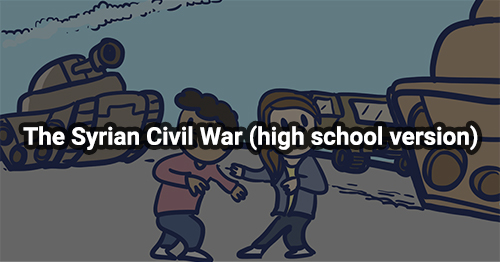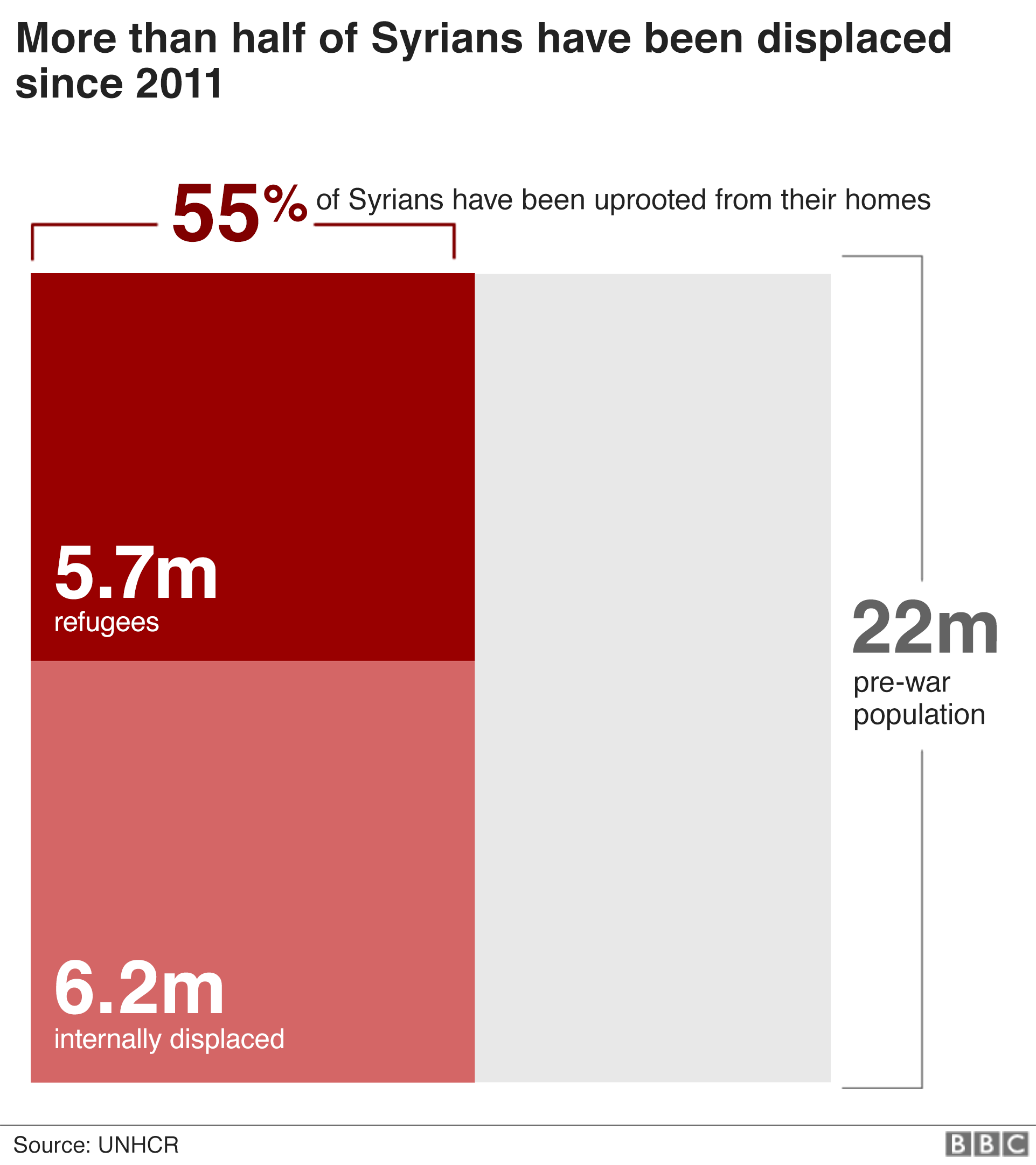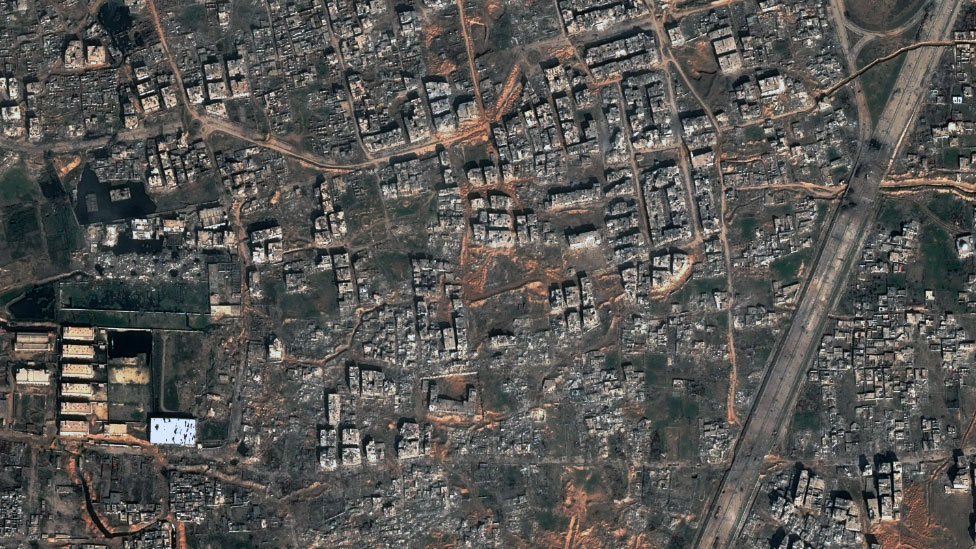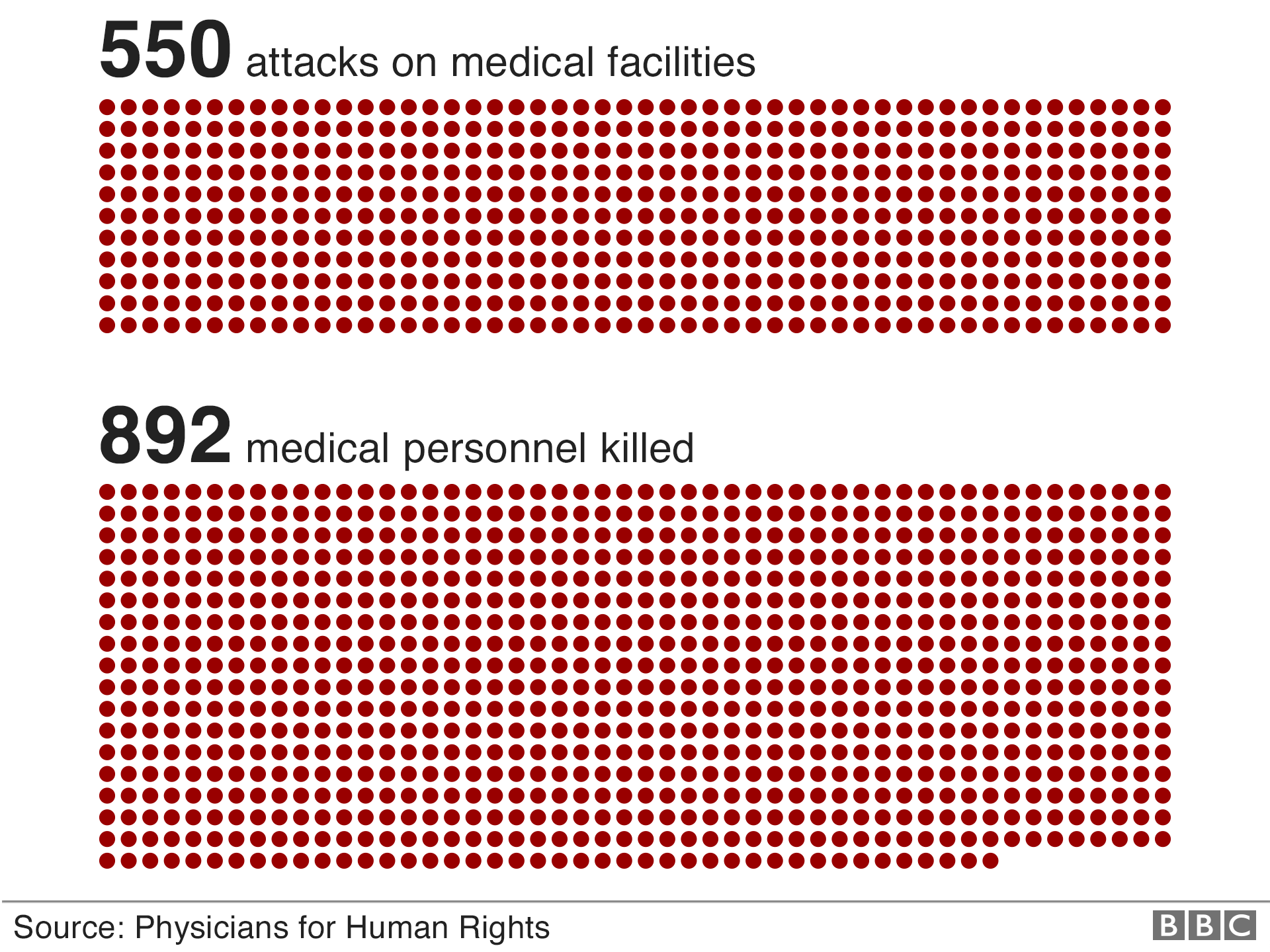The Syrian Civil War (high school version)

*Please note that this sample lesson is meant for high school students.
War and violence make it difficult to vaccinate children in certain parts of the world. However, violence doesn't always mean war (remember some of the violence in Pakistan you learned about in previous lessons?). In this lesson, we’re going to look at the challenges war brings when it comes to accessing vaccines. Let's take a look at the war in Syria as an example.
When did the war in Syria start, and how long has it been going on?
The war in Syria started in 2011. It is still happening today.
What is the war in Syria about?
The war in Syria is a very complicated war, so we won’t be able to cover all the historical and current factors surrounding this war.it. In this lesson we will take a look at some of the biggest aspects of the war, with a focus on how it has affected the vaccination of children.
When the war started, it was a battle between those who were for and those who were against President Bashar al-Assad. With an authoritarian ruler, al-Assad did not allow the people in Syria to have democratic freedoms. Opposing views were censored. People did not have basic privacy, with the government watching and keeping track of ordinary people. People that opposed the president were sent to jail. At the same time, the economy was weak and people were struggling with poverty. These are some of the factors that led to pro-democracy protests in 2011.
In retaliation, the government used violence to try to stop the protests. The protestors then demanded that al-Assad resign as president. In response, the government used even more violence to try and to stop the protests. The protestors took up arms to defend themselves, and started to kick government forces out of their cities.
Since then, the war has continued to evolve. There are divisions and conflicts between religious groups, ethnic groups (such as the Kurds), and even terrorist groups. On top of all this, there are now several other countries involved, (including Russia, Iran, the United States, the United Kingdom, France, Turkey, Israel, and Saudi Arabia). These countries are involved to varying degrees; Some of these countries are directly involved in the conflict, some provide political support, and some supply weapons. Each country’s involvement is motivated by something different and not every country is on the same side.. However, we won’t get into the details of this in this lesson.
How have people in Syria been affected?
“Children inside Syria tell us that they feel hopeless. They have witnessed their friends and families being killed. Their homes are now rubble. They are hungry, often sick. They can’t find clean water. Hospitals are barely functioning. Even if their school is still standing, it’s probably far too dangerous to attend.” - Save The Children
The war in Syria is one of the worst humanitarian crises in the world today. As of March 2020, nearly 600,000 people have been killed or are missing as a result of the war. More than 2,000,000 (2 million) people have been injured and now live with permanent disabilities.
More than 6,700,000 people have had to leave their homes due to violence but remain in Syria and are known as internally displaced persons. Another 6,600,000 people have had to leave Syria, becoming refugees. Together, that’s more than 13,300,000 people. That’s more than half of the pre-war population of Syria that have fled their homes. Since the war began, more than a million Syrian children have been born in exile.



It’s hard to imagine these numbers. To put it into perspective, let’s compare them to provinces in Canada:
More than 600,000 people killed or missing.
- This is more than all the people in Newfoundland and Labrador (520,437).
More than 13,300,000 people left their homes because it was too dangerous to live there.
- That’s more than the population of British Columbia (5,120,000), Alberta (4,428,000), Saskatchewan (1,181,000), and Manitoba (1,379,000) combined.
Keep in mind that leaving their homes also involves great risk to their lives. They must cross war zones, often without proper transportation or access to food and water. Many people have died just trying to leave.
Even for those who make it safely, things are hardly easy. Refugees arrive without jobs, food, shelter, or money. Everything they had was left behind or destroyed—all while ending up in a country where they don’t speak the language or have many rights.
Canada has welcomed approximately 45,000 refugees from Syria so far. Refugees have survived and escaped some of the most dangerous situations in the world. It’s no wonder that they are some of the smartest, most resilient, and most courageous people. As members of our society, their experiences and contributions make Canada a richer and better country every day.
To hear from children who escaped Syria, watch the video below.
How is war affecting the vaccination of children in Syria?
Given what you’ve learned about the war in Syria, it’s not hard to see why vaccinating children in war zones would be difficult—and dangerous. You might be wondering why it would be a priority to vaccinate children when there is a war going on. This is because without proper sewage systems, water, or access to healthcare, dangerous diseases can spread quickly, making the situation even worse. This is why vaccination campaigns are part of the humanitarian efforts of many organizations in and around Syria.
Let’s take a closer look at how the war affected the immunization rate in Syria:
In 2010, Syria’s immunization rate (the percentage of people vaccinated) was at 80%.
In 2011, Syria’s civil war began.
By 2014, just 3 years later, the immunization rate fell to 43%. That means more than half the people weren't vaccinated.
This has resulted in outbreaks of vaccine-preventable diseases, including polio. After 15 years without a single case of polio in Syria, an outbreak was confirmed in 2017.
War has devastating effects across all aspects of society. Its impact on immunization rates is one of them. Two-thirds of all unvaccinated children in the world live in countries affected by conflict. This is because all the reasons for inequalities in immunization (that you learned about in previous lessons) apply in conflict zones.
During a war:
- Vaccines may not be available and health services are damaged or far away. Doctors and nurses aren’t able to get to people. Doctors and nurses could be killed just by travelling in a warzone.
- You can lose all your possessions. People have to leave their homes and cities. There are no jobs and no way to make money, forcing people into poverty. Children aren’t able to get an education and can get stuck in a poverty trap.
- Families aren’t able to access information because telephones, internet, TV, and other methods of communication are damaged. This makes it difficult to do things like schedule a vaccine appointment. People are less likely to find out why immunization is important.
Sometimes, warring groups might believe that immunizers are spies, or that vaccines are dangerous, or that the children are part of the enemy and shouldn’t get vaccinated. Other times, hospitals and healthcare workers are targets because they help wounded soldiers. This can make immunizers a target. Many immunizers – doctors, nurses, and volunteers – have been killed while trying to reach children in warzones. In the case of Syria, hospitals are attacked so often that people are afraid to go to them.
In Syria between 2011 and March 2020, there have been at least 595 attacks on 350 medical buildings. These attacks have killed at least 923 doctors, nurses, and other healthcare workers.

Despite all these dangers, there are people who are willing to risk their lives to give vaccines to children in Syria. To see their story, watch the video from the National Geographic below about the Syrian war and the lengths that some health care workers go to protect children. In the campaign covered in this video, there were more than 8000 volunteers. They were able to vaccinate more than 1.4 million children in some of the most dangerous places in Syria. With the efforts of vaccinators like these, Syria was able to stop the polio outbreak in December 2018.
What are some of the reasons immunization is so difficult during the war in Syria?
Why do volunteers continue to immunize children, even when they know that they could lose their lives?
All lessons & quizzes are free!
This was just one of the lessons in our Global Inequality section. There are over 60 lessons on Kids Boost Immunity just like this one on a variety of subjects. Each lesson includes a quiz, and every time a student scores 80% or higher on a quiz, we will donate life-saving vaccines to UNICEF Canada. Sign up now!



